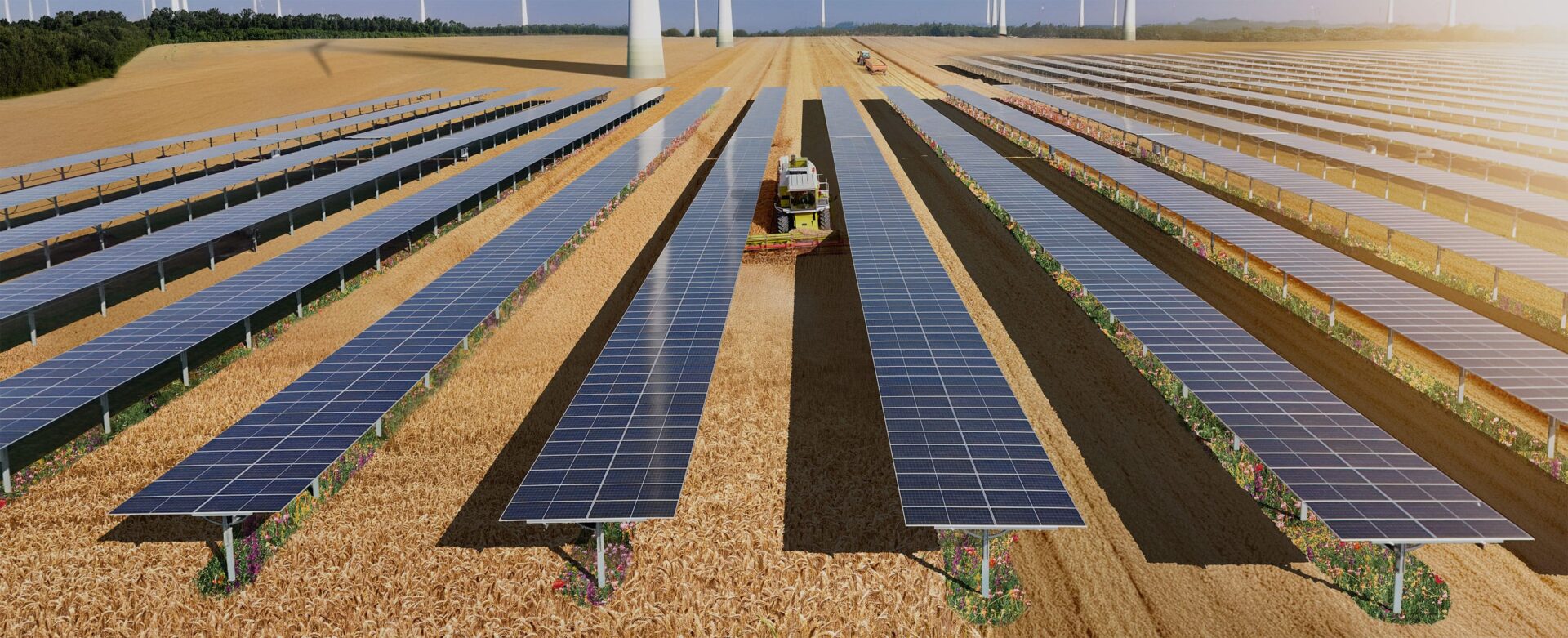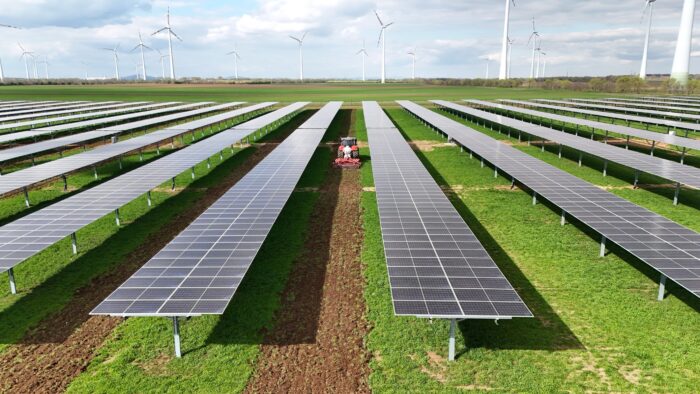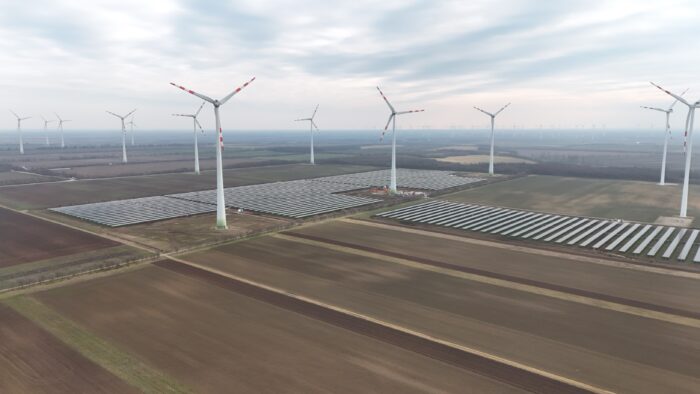
PV MEETS AGRICULTURE
Using land efficiently
No results found.

PV MEETS AGRICULTURE
Using land efficiently
As the GOLDBECK SOLAR Group, we strive for a world in which agricultural land is used efficiently for the simultaneous production of food and solar energy in order to make a contribution to global energy and food security.

We would be happy to discuss with you how we can plan, finance, implement and maintain your agri-PV system together. Rely on GOLDBECK SOLAR and invest in renewable energies and the benefits of a green future.
The efficient use of land and a responsible approach to energy and food security are becoming increasingly important. Agri-PV offers a sustainable solution for this: innovative solar technology allows agricultural land to be used twice. At least 85% of the land can continue to be used for agriculture, while the solar modules of the photovoltaic system supply clean energy.


Agrivoltaics offers agriculture a wide range of opportunities and valuable benefits. For example, it can have a positive influence on the microclimate. Partial shading reduces water evaporation and the need for irrigation can be reduced. The solar system also offers protection from extreme solar radiation and can lead to increased crop yields for shade-tolerant plants. Farmers in particular face major challenges here, such as more frequent extreme weather events, which require well thought-out and long-term solutions. Agri-PV can not only contribute to climate adaptation, but also offers an additional, stable source of income.
Our goal: future-proof, environmentally friendly agriculture combined with clean solar power production.
We work closely with you to develop a customized concept that is perfectly tailored to your needs – from the optimum arrangement of the solar panels to integration into your processes.
Our focus is on flexible tracker systems that adapt dynamically to the position of the sun. The Agri-PV Tracker technology maximizes energy yields, while agricultural use can continue without restriction between the rows, taking into account sufficient row spacing.
This means that both arable farming and grassland concepts can be realized.
In this way, we create a sustainable link between agriculture and photovoltaics – for future-oriented and economically viable land use.
![]()
Your turnkey Agri-PV system
GOLDBECK SOLAR offers customized Agri-PV solutions for agricultural land. We support you from project development through engineering and procurement to the realization of your project (EPC) and can also take over the operation and maintenance of your system (O&M).

Do you have questions about our offer, our services or our approach? Would you like to find out whether your area is suitable for an Agri-PV system? We would be happy to discuss this with you in a non-binding initial meeting.
GOLDBECK SOLAR builds medium to large ground-mounted systems and has over 20 years of experience in system construction. The requirements for agri-PV projects in particular are often very individual – which is why we examine each site individually. We look forward to receiving information about your area using the following form.
An agrivoltaic system has higher CAPEX costs compared to a standard PV system in open areas. These arise in particular due to increased elevation and a lower power density, so that 85% of the area can still be cultivated. In return, the tracker system offers an increased specific yield due to the optimized tracking mode and an improved electricity production curve – the midday electricity peak is shifted to the hours in the morning and afternoon.
Unlike a conventional PV system, an agrivoltaic system focuses on the agricultural utilization concept. The system design is created based on this and the system is implemented accordingly. Agri-photovoltaic systems are often installed at height – here we are at your side with our expertise in system construction and are happy to develop the right concept.
GOLDBECK SOLAR became involved in the field of agrivoltaics at an early stage and was already involved in the first standardization processes. In the meantime, a total output of 200 MWp is being implemented. This has enabled us to position ourselves as a pioneer for agrivoltaic tracker technology, particularly in the German and Austrian markets.
We see a variety of technical options in agrivoltaics and also large and fast learning curves towards economic solutions. The development of agrivoltaics must go hand in hand with regulatory requirements and remuneration structures in order to sustainably position sensible and innovative solutions on the market in the long term.
Numerous solar installations for companies testify to our success and provide a strong track record in the energy industry.
